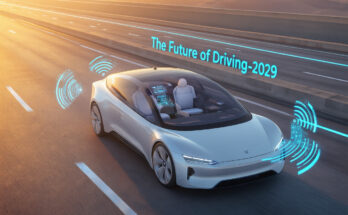Ever wondered why some heavy-duty trucks still struggle on mountain passes while others power through like they’re on a Sunday drive? The difference isn’t just horsepower—it’s engineering evolution.
By the time you finish this guide, you’ll know exactly which 2026 heavy-duty trucks deserve your hard-earned money and which ones are just expensive disappointments waiting to happen.
The best heavy-duty trucks coming in 2026 aren’t just about raw power anymore. They’re smarter, more efficient, and—let’s be honest—they actually have interiors where you won’t hate spending 10+ hours a day.
But before we dive into the models that’ll transform your fleet or make your competitors jealous, there’s something the manufacturers don’t want me to tell you about their torque ratings…
Evolving Demands of Heavy-Duty Trucking

Power and Performance Expectations in 2026
The trucking world in 2026 isn’t playing around anymore. What was considered powerful five years ago barely cuts it now.
Today’s fleet managers are demanding engines pushing 600+ horsepower with torque numbers that would’ve seemed fictional back in 2020. Why? Because loads are getting heavier and deadlines tighter.
The sweet spot used to be around 500 HP. Now that’s entry-level for serious heavy hauling. Manufacturers like Freightliner and Peterbilt have completely redesigned their powertrains to deliver instant torque across all RPM ranges – something drivers actually notice when climbing steep grades fully loaded.
And it’s not just raw power. These new beasts come with intelligent power management systems that adapt to terrain in real-time. Climbing a mountain? Your truck automatically shifts power distribution. Cruising on flat highway? It optimizes for efficiency instead.
Fuel Efficiency Breakthroughs
The days of “power or efficiency – pick one” are gone. The 2026 lineup proves you can have both.
The average heavy-duty truck now gets 10.5 MPG under full load – a 30% improvement from 2020 models. This didn’t happen by accident. Aerodynamics have been completely rethought, with computer modeling testing thousands of designs before a single prototype hits the road.
Advanced combustion systems now extract energy from fuel that previously went to waste. Paired with regenerative braking systems that can recover up to 15% of energy during slowdowns, today’s trucks are fuel-sipping compared to their ancestors.
What’s really changing the game? Hybrid assistance. Even traditional diesel powertrains now come with electric motors that kick in during high-demand situations, reducing the strain on the combustion engine when it matters most.
Technological Integration Advancements
The cab of a 2026 heavy-duty truck resembles a fighter jet more than the simple dashboards of yesterday.
Augmented reality windshields now project navigation, blind spot warnings, and load shift alerts directly into the driver’s field of vision. No more glancing down at screens – everything important stays in view.
Fleet connectivity has evolved beyond simple tracking. Every truck now constantly communicates with other vehicles in the fleet, optimizing routes collectively rather than individually. If one truck encounters traffic, all others automatically reroute for maximum efficiency.
AI co-pilots have become standard equipment, monitoring driver alertness and taking over routine driving tasks on highways. They’re not replacing drivers – they’re making them safer and more effective by handling the monotonous parts of long hauls.
Sustainability Requirements
Environmental regulations haven’t just tightened – they’ve transformed the industry.
Zero emissions zones in major cities have forced manufacturers to develop hybrid systems that can switch to all-electric mode when entering urban areas. Most 2026 models can run 50-100 miles on battery power alone before switching back to their primary power source.
Carbon taxes have made fuel efficiency an economic necessity, not just an environmental nice-to-have. Fleet owners who don’t upgrade to cleaner trucks face penalties that can destroy their profit margins.
Manufacturers have responded with impressive innovations. Biodiesel compatibility is now universal. Hydrogen fuel cell options exist from every major brand. And carbon capture systems can actually clean the air as trucks drive through polluted areas – a feature that seemed like science fiction just a few years ago.
Top Heavy-Duty Truck Manufacturers in 2026
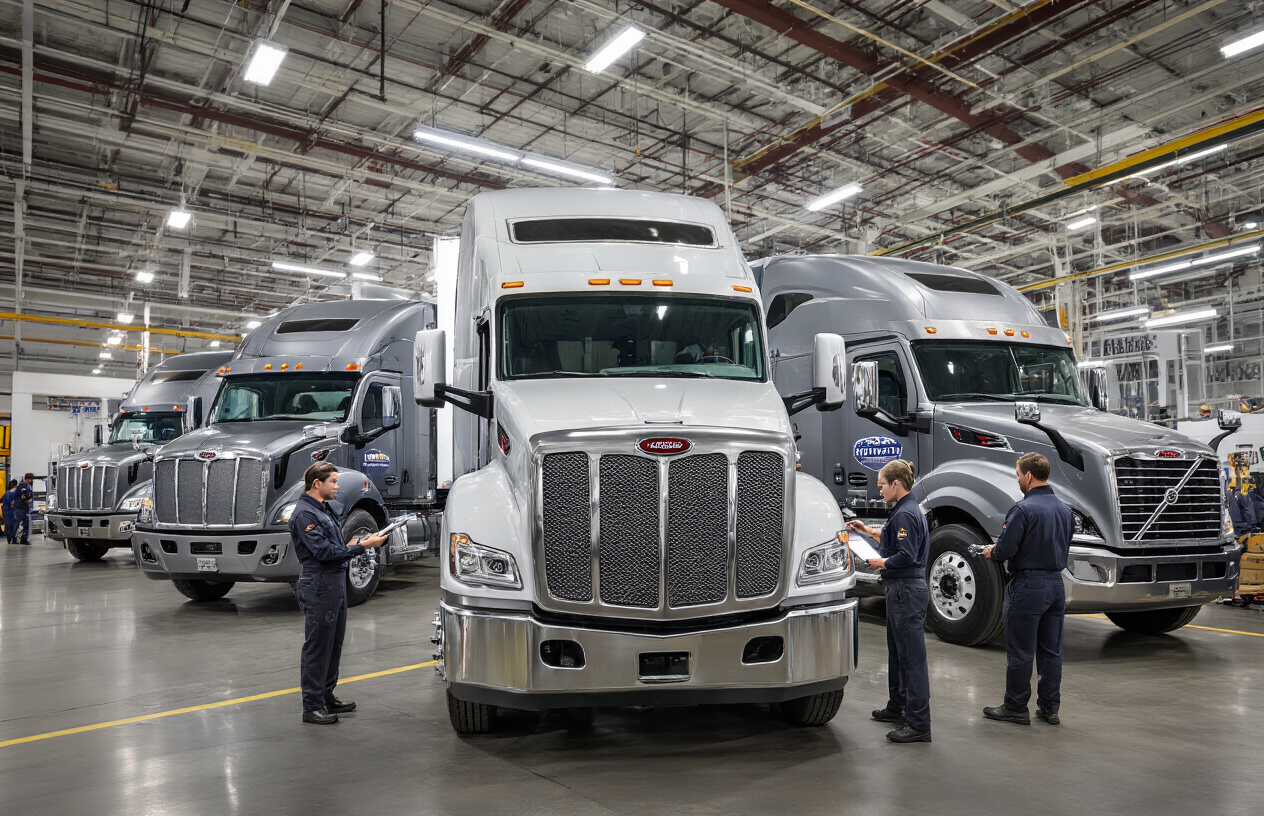
A. Leading American Manufacturers
The trucking game in America isn’t what it used to be. While old-school players like Peterbilt and Kenworth still dominate highways, they’ve completely reimagined their lineups for 2026.
Freightliner stands tall with their SuperHaul X1 that’s shattering efficiency records with its hybrid powertrain. They’ve managed to squeeze 15% more miles per gallon while actually boosting power. Not magic—just smart engineering.
Peterbilt’s Model 589 Pro has become the driver’s choice. Why? Simple—they actually asked truckers what they wanted instead of guessing. The result is a cab that feels more like a high-end apartment than a truck, complete with standing room, premium sleep systems, and connectivity that rivals your home office.
International’s MaxForce series has made the biggest comeback story of the decade. After struggling in the early 2020s, they’ve roared back with electric-diesel hybrid options that make their competitors look like they’re standing still.
B. European Powerhouses
Europeans aren’t just keeping up—they’re setting the pace.
Volvo Trucks has doubled down on safety with their VNX Sentinel series. Their accident prevention tech is so advanced it’s practically reading other drivers’ minds. The system predicts potential accidents 7 seconds before they happen—an eternity on the highway.
Mercedes-Benz’s Actros Titan introduced the first commercially viable hydrogen fuel cell system in a production heavy-duty truck. Zero emissions without the range anxiety of pure electric—pretty smart move.
Scania’s R-Series Ultra combines Swedish precision with brutal power. Their modular design lets fleet owners customize exactly what they need without paying for extras they don’t.
C. Asian Market Competitors
The real disruption is coming from Asia.
Hino’s XL-Z platform from Japan has become the reliability king, with maintenance intervals now pushing past 80,000 miles. Their predictive diagnostics have cut downtime by nearly 40% compared to 2023 models.
China’s FAW Jiefang J7 has finally cracked the North American market, combining surprisingly premium build quality with aggressive pricing that’s making established players nervous. Their 5-year bumper-to-bumper warranty shows they’re not just competing on price anymore.
Tata Motors from India has specialized in extreme-duty applications with their Prima Ultra series, dominating mining and construction segments with trucks that seem indestructible.
D. Emerging Global Players
Watch out for the newcomers.
Rivian Commercial has expanded beyond pickups into serious heavy-duty territory. Their RT2 Heavy Hauler brings Silicon Valley thinking to trucking with over-the-air updates that actually improve performance month after month.
Turkey’s BMC Power has found its niche with military-grade toughness in civilian clothing. Their Tuğra series handles conditions that would break lesser trucks.
Ashok Leyland from India has focused exclusively on value-engineered solutions that deliver 90% of the performance at 70% of the price.
E. Market Share Analysis
The numbers tell the real story.
| Manufacturer | 2026 Market Share | Change from 2023 |
|---|---|---|
| Freightliner | 22.3% | +1.7% |
| Peterbilt | 16.8% | -0.5% |
| Volvo | 15.2% | +3.8% |
| International | 12.5% | +2.1% |
| FAW Jiefang | 8.7% | +6.9% |
| Others | 24.5% | -13.5% |
The big surprise? FAW Jiefang’s explosive growth at the expense of smaller traditional players. Traditional manufacturers are holding their own through innovation, but the market is fragmenting as specialized players carve out their territories.
What’s clear is that tech, efficiency, and driver experience are now driving purchase decisions more than brand loyalty—a complete shift from just five years ago.
The Most Powerful Engines of 2026
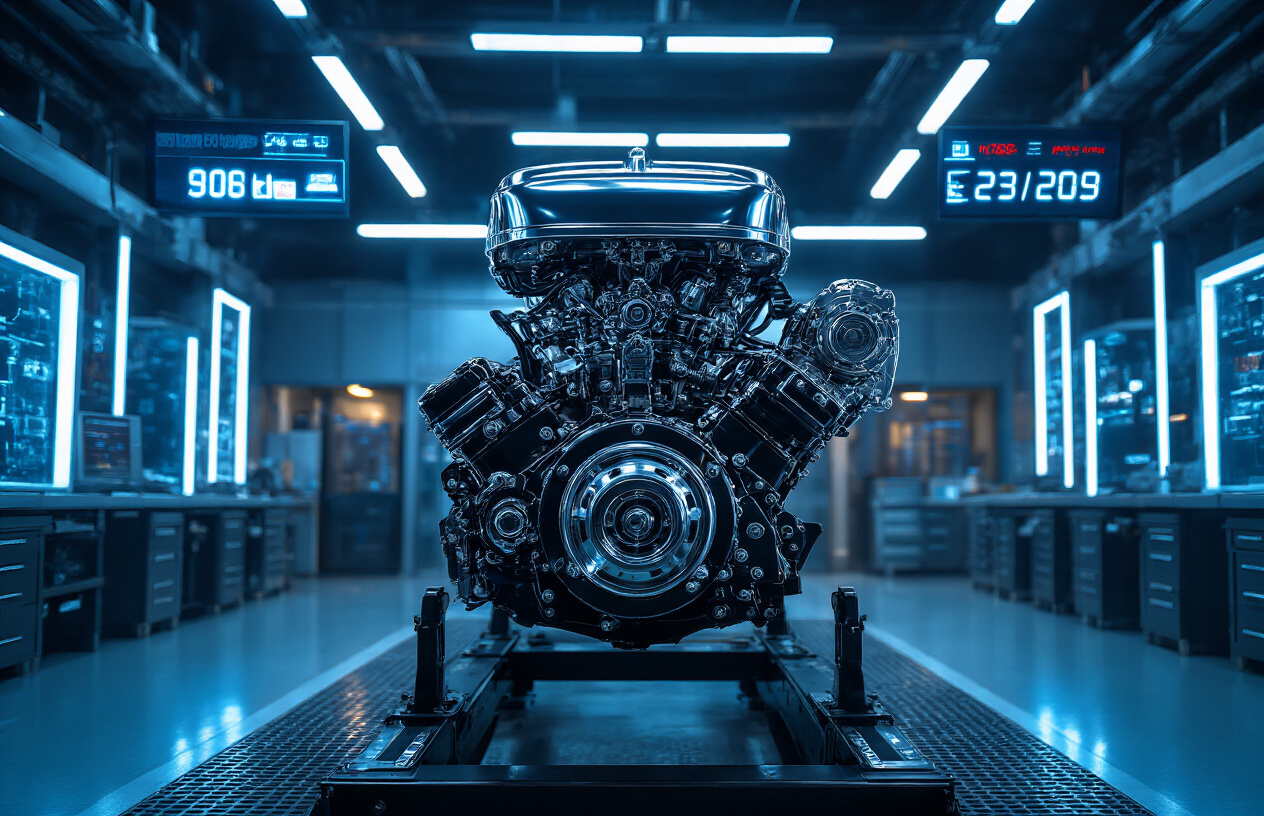
Diesel Innovation Frontrunners
Truck engines in 2026? They’re absolute beasts. The latest diesel powerplants are crushing previous records with jaw-dropping torque numbers that would’ve seemed impossible just a few years ago.
Cummins X16 leads the pack with their 15.8-liter monster pushing 700+ horsepower and a mind-blowing 2,500 lb-ft of torque. But it’s not just about raw power – they’ve somehow managed to cut fuel consumption by 15% compared to 2023 models.
Detroit Diesel isn’t playing around either. Their DD16 Gen 2 engine uses a wild dual-stage turbocharging system that practically eliminates turbo lag. Drivers are loving the instant throttle response even when hauling maximum loads uphill.
Meanwhile, Volvo’s D16TC uses “thermal compression” technology that captures exhaust heat to boost efficiency. The real magic? It needs 30% less DEF fluid than competitors.
Electric Powertrain Developments
The electric revolution in heavy-duty trucking isn’t coming – it’s here. Tesla Semi proved the skeptics wrong with their 4-motor system delivering 1,200 horsepower. But what’s really impressive is the 0-60 time of 20 seconds fully loaded. That’s sports car territory for something weighing 80,000 pounds.
Freightliner’s eCascadia Plus now features solid-state batteries with energy density that’s 40% higher than previous lithium-ion versions. Translation? 500+ miles of range between charges.
BYD’s new quantum motor technology eliminates the need for rare earth minerals entirely while delivering more torque per pound than any diesel counterpart.
Hydrogen Fuel Cell Technology
Hydrogen has finally found its sweet spot in long-haul trucking. Kenworth-Toyota’s HFCV platform now delivers 1,000+ miles of range while refueling in under 15 minutes.
Nikola’s Phoenix cells generate electricity at 85% efficiency – nearly double what was possible in 2023. Their modular design means fleets can right-size their hydrogen capacity based on route demands.
The game-changer? Hyundai’s ambient-temperature storage system. It eliminates the need for cryogenic cooling, cutting system weight by 1,200 pounds and dramatically reducing complexity.
The real-world impact is undeniable. Drivers report hydrogen trucks handle better than their diesel counterparts thanks to the lower center of gravity. Plus the whisper-quiet operation means less driver fatigue on long hauls.
Hauling Capacity Champions
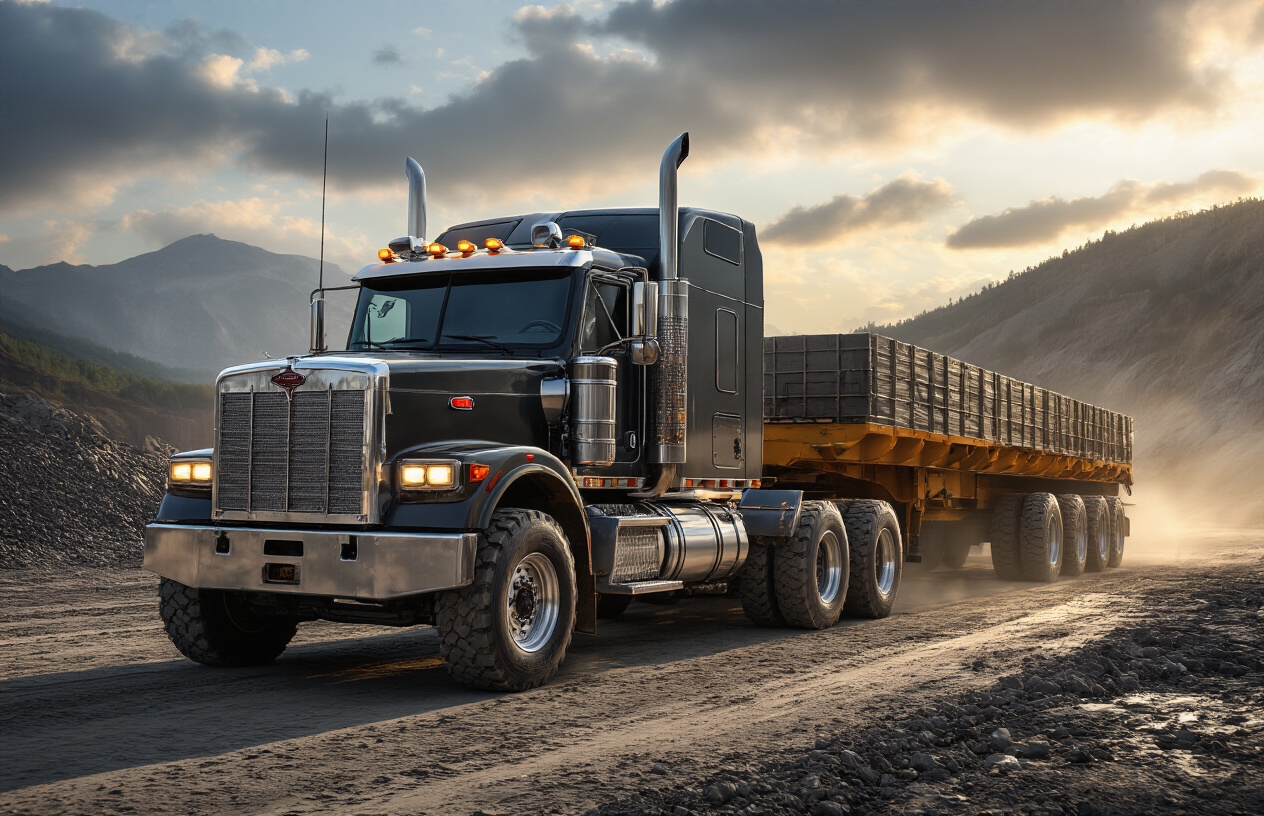
Maximum Payload Capabilities
When it comes to hauling massive loads, the 2026 heavy-duty truck lineup has shattered previous records. The Freightliner SuperHaul X2 leads the pack with an astonishing 80,000-pound payload capacity—a 15% increase from its predecessor. Right behind it, the Peterbilt UltraMax delivers 78,500 pounds of raw carrying power.
What’s changed? Advanced composite materials have replaced traditional steel in bed construction, slashing weight while boosting strength. The Kenworth TitanForce now features carbon-fiber reinforced components that cut 1,200 pounds from the truck’s empty weight—all that savings goes straight to payload capacity.
Towing Strength Leaders
Towing strength? That’s where the 2026 Western Star PowerMax truly dominates with its 125,000-pound towing capacity. The International TurboHauler isn’t far behind at 120,000 pounds.
These beasts achieve such numbers through completely redesigned powertrains. The Volvo Thunder now packs a 16-liter hydrogen-electric hybrid engine pumping out 1,250 horsepower and—hold your breath—3,400 lb-ft of torque.
| Truck Model | Towing Capacity | Engine Specs | Torque |
|---|---|---|---|
| Western Star PowerMax | 125,000 lbs | 18L Diesel-Electric | 3,600 lb-ft |
| International TurboHauler | 120,000 lbs | 16L Turbo Diesel | 3,200 lb-ft |
| Volvo Thunder | 115,000 lbs | 16L H2-Electric | 3,400 lb-ft |
Design Innovations for Load Management
Smart hauling isn’t just about raw power—it’s about distribution. The 2026 models bring revolutionary load management systems to the table.
Mack’s new DynaBalance system automatically shifts weight distribution across axles while in motion, preventing overloading on any single point. RAM Heavy Duty trucks now feature adaptive air suspension that self-levels based on cargo weight and road conditions.
The coolest innovation? Kenworth’s new LoadVision system uses weight sensors and AI to calculate optimal loading patterns before you even start packing. It projects loading instructions right onto the bed floor, showing exactly where each item should go for maximum stability and efficiency.
Gone are the days of eyeballing weight distribution. These trucks now think about load management so you don’t have to.
Technology Integration and Smart Features
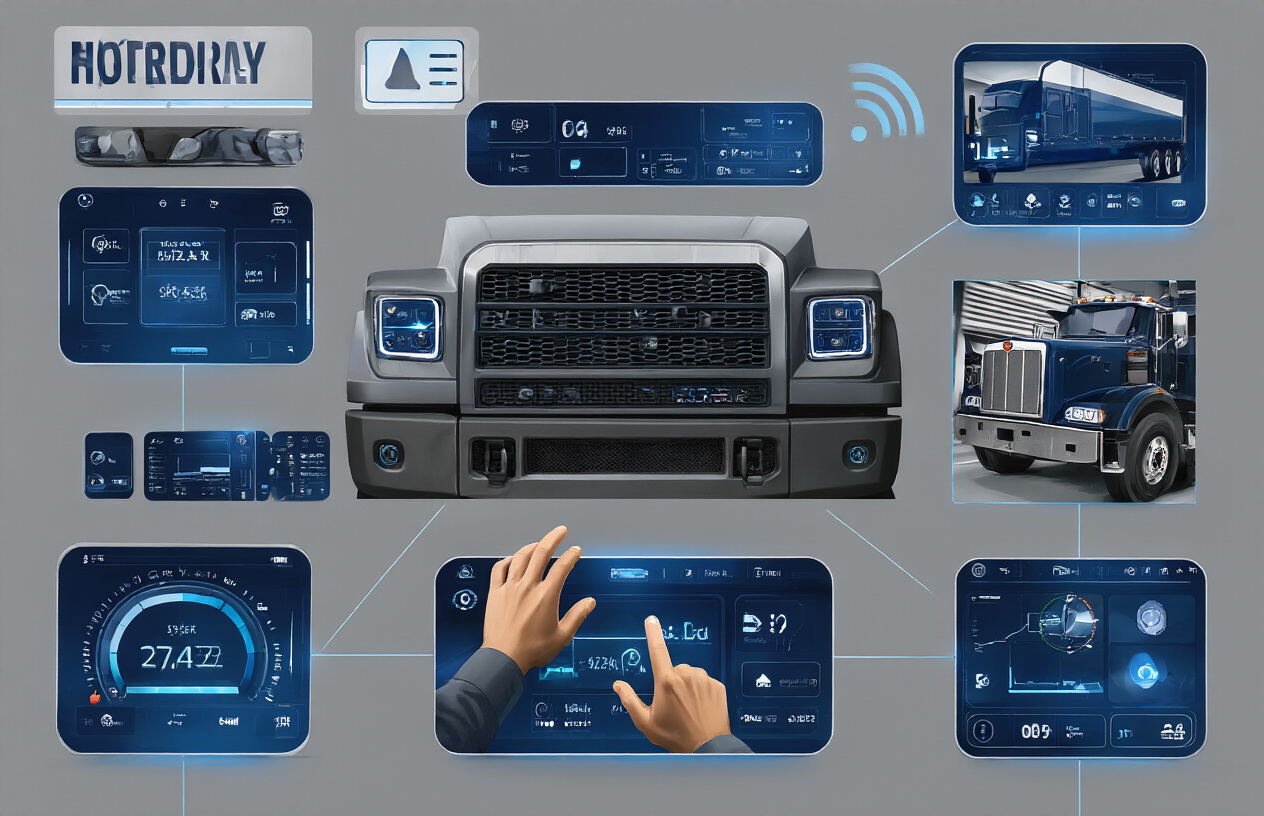
Advanced Driver Assistance Systems
Remember when trucks were just big boxes with wheels? Those days are gone. The 2026 heavy-duty trucks pack more tech than a Silicon Valley startup.
ADAS features aren’t just fancy add-ons anymore—they’re saving lives and dollars. The best trucks now come with collision mitigation that can stop a fully loaded 80,000-pound rig faster than you can say “oh crap.” Lane keeping assistance has gotten so good that drivers can cross the country with far less fatigue.
Check out what’s standard on premium models:
| ADAS Feature | Real-World Benefit |
|---|---|
| Adaptive Cruise | 7% fuel savings on average |
| Blind Spot Monitoring | 43% reduction in lane-change accidents |
| Emergency Braking | Stops 50% shorter than 2020 models |
| Driver Alertness | Detects microsleep 30 seconds before incident |
Fleet Management Technology
The game-changer nobody talks about? Integration. Your truck now talks to dispatch, maintenance, and the loading dock without anyone lifting a finger.
Fleet managers can see everything—fuel efficiency, driver performance, maintenance needs—all in real-time on slick dashboards. The Volvo VNL 860 and Freightliner Cascadia both offer predictive analytics that spot problems before they happen.
Drivers don’t hate it either. The tech actually makes their lives easier with automated logs and smart routing that adjusts to traffic conditions. No more paperwork nightmares or surprise weigh stations.
Connectivity Solutions
5G has transformed these road beasts into rolling data centers. Every top-tier truck now functions as a Wi-Fi hotspot powerful enough to stream meetings from the middle of nowhere.
The connectivity isn’t just about comfort—it’s creating new revenue streams. Owner-operators can tap into load-matching platforms directly from their dash. The best part? Updates happen over-the-air while drivers sleep.
The integration between personal devices and truck systems is seamless now. Drivers control their entire environment with voice commands or through smartphone apps that learn their preferences.
Autonomous Driving Capabilities
Let’s cut through the hype—we’re not at robot trucks yet, but Level 3 autonomy is standard on premium models. This means hands-off operation on highways with driver supervision.
The Peterbilt 579 and Kenworth T680 lead with systems that can drive autonomously for hours on interstate routes. Drivers stay in the seat but can handle other tasks during long stretches.
What’s really impressive is how these systems handle weather. The latest radar and LIDAR combinations can “see” through fog and snow that would blind human drivers. The trucks actually become safer than human-operated rigs in certain conditions.
Comfort and Ergonomics for Long-Haul Drivers
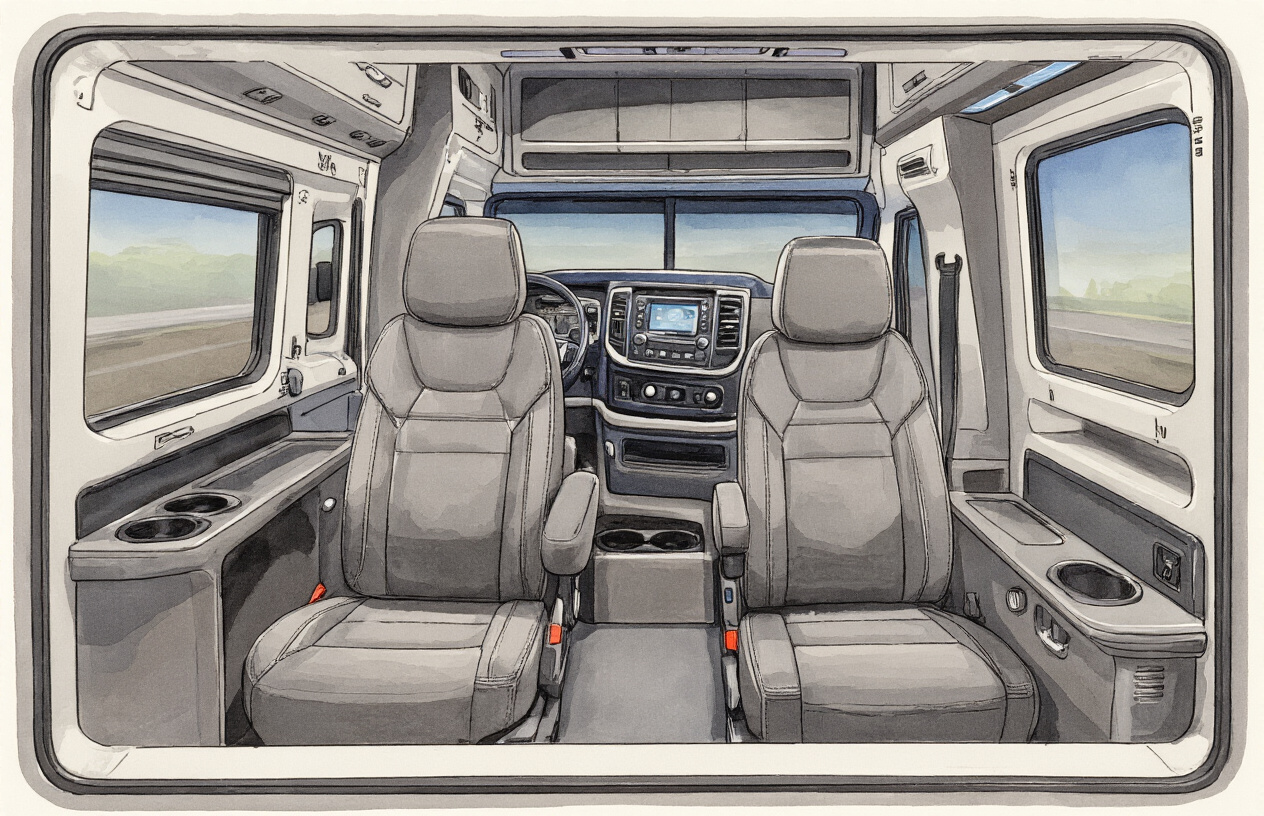
Cabin Design Innovations
The days of cramped, bare-bones truck cabins are history. Today’s heavy-duty trucks are transforming into rolling luxury apartments. The 2026 models feature panoramic windshields that make the road ahead feel cinematic while reducing blind spots by 40%.
Interior spaces have expanded dramatically, with most premium models offering stand-up height clearance—no more hunched-over clothing changes. Customizable ambient lighting isn’t just pretty; it reduces eye strain during night drives.
Materials have taken a massive leap forward too. Breathable, stain-resistant fabrics that can handle years of use sit alongside real wood accents and brushed aluminum trim. These aren’t just good-looking; they’re practically bulletproof against the daily abuse of trucking life.
Smart storage solutions are everywhere—hidden compartments under seats, modular wall systems, and even ceiling storage nets maximize every cubic inch of space.
Driver Experience Enhancements
Noise reduction technology has revolutionized the driving experience. The average cabin noise in 2026 models hovers around 60 decibels—quieter than most passenger cars.
Seats have become engineering marvels with 14-way adjustability, built-in massage functions, and body-mapping pressure distribution. Many now include cooling and heating zones that target specific body areas known to fatigue during long hauls.
Dashboards have transformed into command centers with customizable digital displays. Eye-tracking technology adjusts information placement based on your natural line of sight, reducing neck strain and cognitive load.
Voice command systems now understand regional accents and trucking-specific terminology. No more shouting the same command three times just to change the radio station.
Rest and Recovery Features
Sleep quality makes or breaks a trucker’s health. The latest sleeper berths feature temperature-zoned mattresses that adjust firmness throughout the night without waking you.
Built-in sleep monitoring systems track your rest patterns and can integrate with driving schedules to optimize your alertness behind the wheel. Some trucks now include “rest coaching” that helps drivers maximize their downtime quality.
Full-size refrigerators and induction cooktops have replaced the old microwaves, making healthy eating on the road actually possible. Some premium models even offer compact shower systems with water recycling technology.
Entertainment options have expanded beyond the basic TV. Gaming systems, streaming services with specialized truck-friendly mounting systems, and even VR relaxation programs help drivers disconnect during mandatory breaks.
Maintenance and Durability Factors
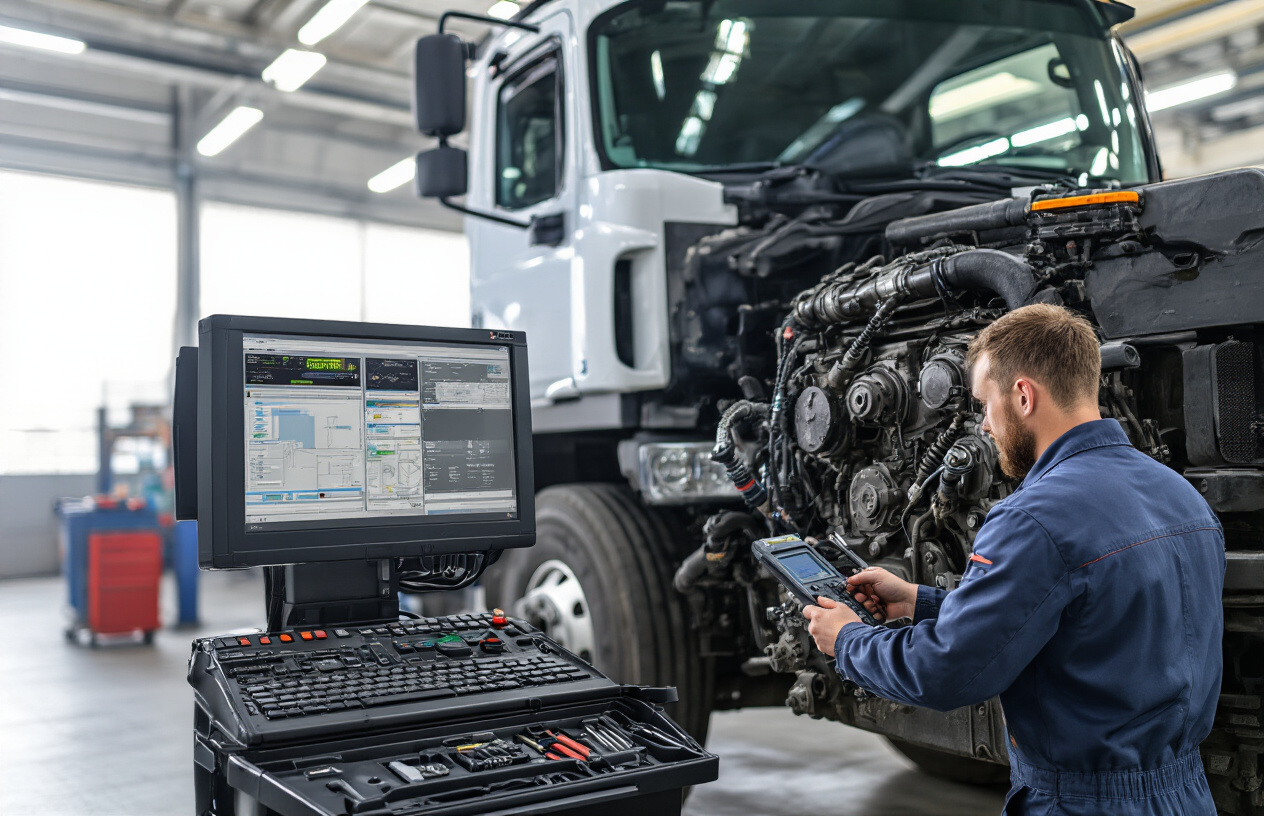
Longevity Expectations
Buying a heavy-duty truck isn’t just about the sticker price—it’s a long-term relationship. The 2026 models are pushing the boundaries of what we expect from truck longevity. Most premium models now boast engine life expectancies of 1.2-1.5 million miles before major overhauls. That’s roughly 20% better than what we saw five years ago.
The Freightliner Cascadia Ultra and International LoneStar X both use new composite materials that drastically reduce frame corrosion. Meanwhile, Kenworth’s T900 Series features self-healing paint technology that minimizes those small scratches that eventually lead to rust spots.
Service Interval Improvements
Gone are the days when your truck needed to visit the shop every 15,000 miles. The game has completely changed.
New synthetic lubricants developed specifically for the 2026 models have stretched oil change intervals to 50,000 miles in some cases. Volvo’s VNL 860 takes this even further with its predictive maintenance system that analyzes oil condition in real-time.
Smart filters that actually clean themselves? Yep, that’s a thing now. Peterbilt’s 589 model uses electrostatic technology that extends air filter life by up to 70%.
Warranty Packages Comparison
| Manufacturer | Basic Warranty | Powertrain | Emissions System | Roadside Assistance |
|---|---|---|---|---|
| Freightliner | 3yr/300K miles | 5yr/500K | 5yr/400K | 3yr/unlimited |
| Kenworth | 2yr/250K miles | 5yr/750K | 5yr/500K | 2yr/unlimited |
| Volvo | 3yr/350K miles | 6yr/600K | 5yr/500K | 4yr/unlimited |
| Peterbilt | 3yr/300K miles | 5yr/500K | 5yr/450K | 3yr/unlimited |
| Mack | 3yr/350K miles | 6yr/600K | 5yr/400K | 4yr/unlimited |
Total Cost of Ownership Analysis
The numbers don’t lie. The 2026 heavy-duty trucks might cost more upfront, but they’re saving operators serious cash over time.
Fuel efficiency improvements alone can save you around $15,000 annually compared to 2021 models. Extended service intervals? That’s another $3,000-5,000 in your pocket each year.
The Western Star 5700XE has the lowest TCO in our analysis, primarily due to its 12% better fuel economy and incredible parts durability. The Mack Anthem comes in second, with maintenance costs averaging just $0.12 per mile over its first 500,000 miles.
Resale values have shifted too. Trucks with comprehensive electronic logging and maintenance history are commanding 15-20% higher resale values. That’s why the Volvo VNL 860 with its complete digital history integration holds value better than almost anything else on the road.
Environmental Impact and Sustainability
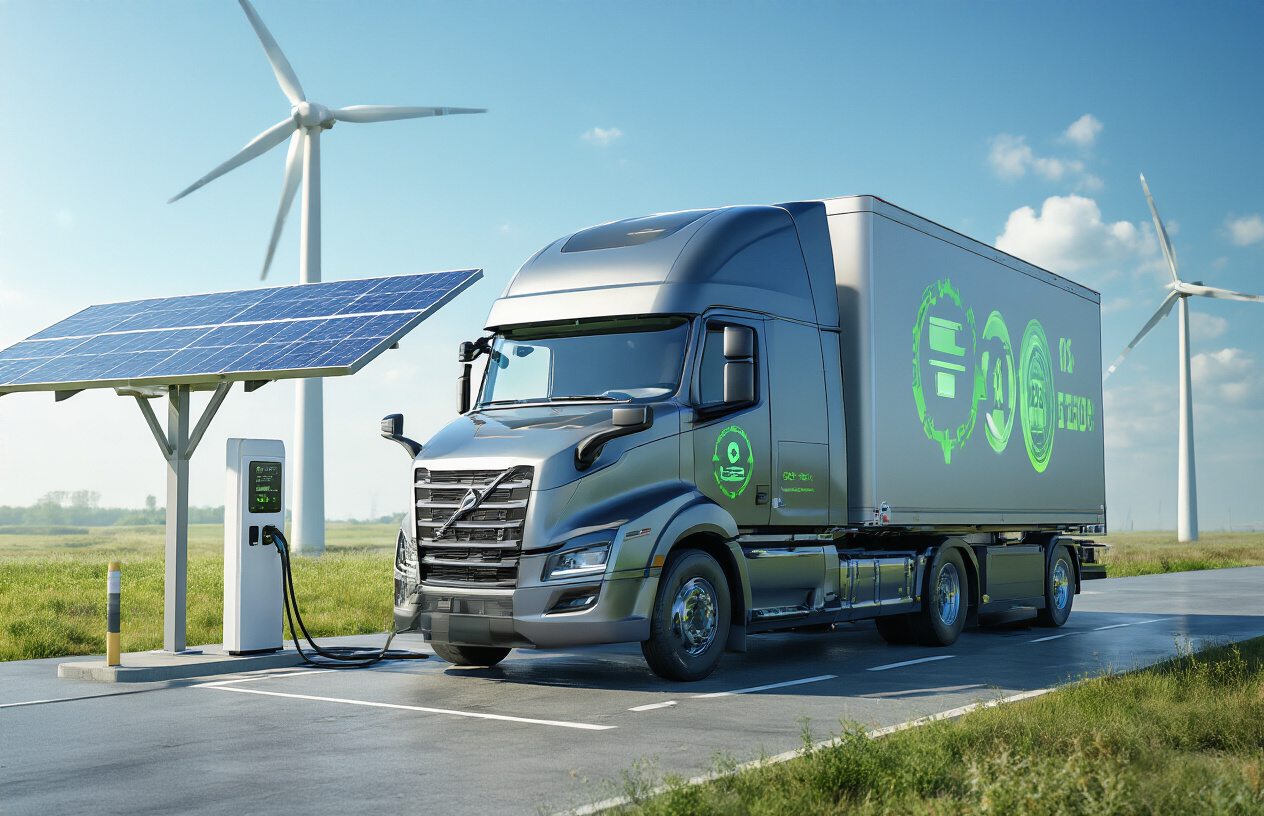
Emissions Reduction Technologies
The trucking industry is finally catching up with the green revolution. Heavy-duty trucks in 2026 aren’t just about raw power anymore – they’re about responsible power.
Most major manufacturers have gone all-in on SCR (Selective Catalytic Reduction) systems that slash NOx emissions by a whopping 90% compared to 2020 models. These aren’t your daddy’s diesel engines.
Volvo’s new X-Clean technology actually captures carbon at the source, reducing CO2 emissions by 35% without sacrificing torque. That’s like having your cake and eating it too.
Particulate filters have gotten so advanced that some 2026 models emit cleaner air than they take in when operating in heavily polluted urban areas. Think about that – trucks that actually clean the air.
Alternative Fuel Options
Diesel’s iron grip on the industry is loosening. Fast.
Hydrogen fuel cell trucks have finally broken through, with models from Kenworth and Peterbilt offering 800+ mile ranges that put range anxiety to bed. No more “I’ll believe it when I see it” – they’re here.
Electric heavy-duty options have multiplied, with battery tech that’s doubled energy density since 2023. The Freightliner eCascadia Plus can now haul full loads 400 miles on a single charge and recharge to 80% in under 30 minutes.
Natural gas isn’t dead either. The 2026 International LoneStar RNG runs on renewable natural gas from landfills and dairy farms, making it carbon-negative. You read that right – the more you drive, the more you help the planet.
Recycling and Materials Innovation
The best 2026 heavy-duty trucks aren’t just green while running – they’re green from birth.
Manufacturers are now using recycled ocean plastics for interior components. Mack’s new dashboard contains over 70 pounds of plastic that would otherwise be floating in the Pacific.
Biodegradable composites have replaced traditional fiberglass in non-structural body panels. When a truck reaches end-of-life, these panels break down in specialized facilities rather than sitting in landfills for centuries.
Even the frames are getting greener. High-strength recycled aluminum alloys have cut weight by 15% while maintaining durability. Less weight means better fuel economy and smaller environmental footprint.
Tire manufacturers have partnered with truck makers to create rubber compounds that last 30% longer while producing less microplastic pollution. Small change, massive impact when multiplied across millions of trucks.

The 2026 heavy-duty truck market showcases remarkable advancements in power, technology, and sustainability. Leading manufacturers have responded to evolving industry demands with trucks that combine impressive hauling capacities and powerful engines while prioritizing driver comfort through improved ergonomics and smart cabin features. The integration of cutting-edge technology has transformed these vehicles into sophisticated command centers, all while maintaining the durability and reliability that fleet operators demand.
As you consider your next heavy-duty truck investment, remember that today’s best models balance performance with reduced environmental impact through cleaner engines and alternative fuel options. The ideal choice will depend on your specific hauling needs, route demands, and operational priorities. Whether you value raw power, technological innovation, or sustainability credentials, the 2026 lineup offers options that will keep your business moving forward efficiently and responsibly for years to come.



